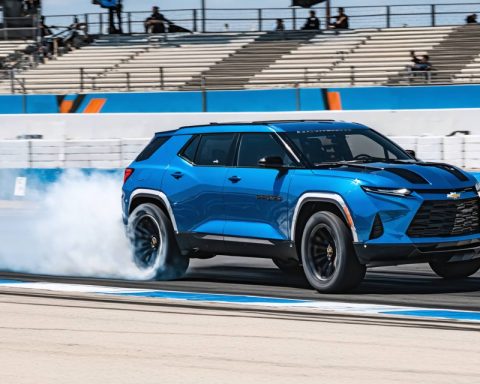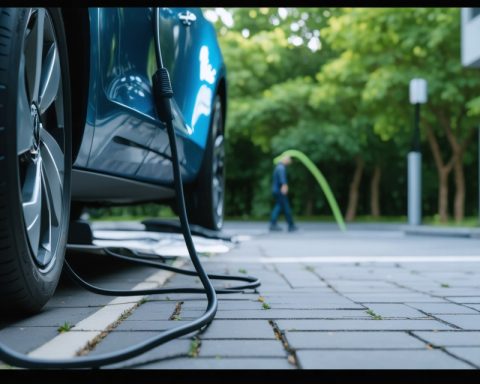- Grand Junction Fire Department is leading efforts to manage firefighting challenges associated with electric vehicles (EVs) due to their complex lithium-ion batteries.
- EV fires require specialized techniques, such as employing a cooling foam to target overheated battery cores and using heavy-duty blankets to contain spread.
- The department is innovating strategies to combat these fires, including allowing controlled burnings when necessary for safety.
- Training and preparation are key to handling EV fires, emphasizing the need for EV owners to understand their vehicle’s specific risks.
- The initiative exemplifies the broader movement in firefighting to adapt to technological changes, ensuring community safety amid the rise of electric vehicles.
- Grand Junction sets a commendable precedent for other cities, promoting a safe transition to electric transportation.
Amidst the sweeping landscapes of Grand Junction, Colorado, a quiet revolution is unfolding in the realm of firefighting. As electric vehicles carve their path into the mainstream, the Grand Junction Fire Department embarks on an electrifying mission: mastering the art of extinguishing fires in these high-tech modes of transportation.
In the firefighting world, electric vehicle (EV) fires present unique challenges. Traditional gasoline-powered cars can be subdued with relative ease, but EVs, with their powerful lithium-ion batteries, require a different approach. These battery cells, under duress, can reignite multiple times even after a blaze appears tamed. Thus, a special strategy is required—a strategy that the Grand Junction Fire Department is currently perfecting.
Recent training sessions have introduced the use of a specialized foam designed to smother EV infernos. This foam acts as a cooling agent, crucial for attacking the root of these thermal behemoths—the overheated battery cores. For added security, firefighters can also employ a heavy-duty blanket, a shield against the flames’ insidious spread. But when Mother Nature is in a defiant mood, sometimes the best intuition is patience: letting the vehicle incinerate in a controlled setting can be the safest path forward.
The Grand Junction expertise impressively aligns with a broader movement within firefighting communities worldwide and underscores the importance of evolving with technological tides. As electric vehicles become more prevalent, firefighters are expected to innovate continuously. The current methods emphasize prevention and preparation, urging EV owners to acquaint themselves with their vehicle’s unique features and potential perils.
The key takeaway? As technology advances, so must our safety measures and knowledge. By getting ahead of the curve, the Grand Junction Fire Department sets a sterling example, ensuring that their community’s safety keeps pace with the march of electric progress. As more cities emulate this approach, the electric dream can continue to burn brightly, safely leading us into a greener future.
The Electrifying Future of Firefighting: Mastering the Art of Extinguishing EV Fires
The Electric Vehicle Revolution and Its Challenges for Firefighters
In Grand Junction, Colorado, a transformation is occurring in the firefighting realm as electric vehicles (EVs) become an integral part of modern transportation. As these vehicles gain popularity, new challenges arise, particularly when dealing with fires that involve powerful lithium-ion batteries. The Grand Junction Fire Department is at the forefront of innovating strategies to tackle these complex situations effectively.
Unique Challenges of Electric Vehicle Fires
Electric vehicle fires differ significantly from traditional gasoline-powered vehicle fires. The challenges include:
– Reignition Risks: EV fires can reignite multiple times due to the nature of lithium-ion batteries, which can continue to heat up and catch fire after initially being extinguished.
– Thermal Runaway: This phenomenon occurs when battery cells overheat, causing a chain reaction that can lead to an uncontrollable fire.
Innovative Solutions: Tools and Techniques
The Grand Junction Fire Department is pioneering various techniques and tools to combat EV fires:
1. Specialized Foam: This foam acts as a cooling agent targeting the overheated battery cores, crucial for containing thermal runaways.
2. Heavy-Duty Blankets: These blankets provide a barrier to prevent the spread of fire, offering firefighters a tool to manage the situation more effectively.
3. Controlled Incineration: In some situations, allowing the vehicle to burn in a controlled setting can be the safest and most practical approach.
How-to Steps & Life Hacks for EV Owners
1. Stay Informed: Understand your vehicle’s battery type and specific fire risks associated with it.
2. Have an Emergency Plan: Keep a fire extinguisher suitable for electrical fires in your vehicle and know how to use it.
3. Routine Inspections: Regularly check for software updates and any battery recalls from the manufacturer, as these can prevent potential hazards.
Real-World Use Cases and Market Trends
– Global Adoption: As EV adoption increases globally, firefighting protocols are evolving, emphasizing the need for updated training programs and equipment.
– Industry Forecast: The electric vehicle market is projected to grow substantially, with more firefighting departments expected to invest in EV-specific training and tools.
Controversies & Limitations
– Cost and Resources: The technologies and tools required to effectively manage EV fires can be costly, and not all fire departments have the funding to acquire them.
– Training Gaps: Not all firefighters are yet trained to deal with EV fires, which can pose safety risks.
Security & Sustainability
Ensuring the safety of both firefighters and the public is paramount. Incorporating sustainable practices, such as using environmental-friendly foam, aligns with the broader push towards greener firefighting solutions.
Insights & Predictions
As EV technology advances, we can expect continued improvements in safety features, battery technologies, and firefighting methodologies. Innovations such as battery designs that minimize the risk of thermal runaway will be crucial.
Recommendations for Readers
– Stay Educated: Regularly update your knowledge of EV technologies and safety protocols.
– Engage with Local Authorities: Participate in community workshops or programs offered by local fire departments to understand how they are adapting to EV-related emergencies.
For more information on innovative firefighting techniques and electric vehicle safety, visit NFPA and Tesla.












